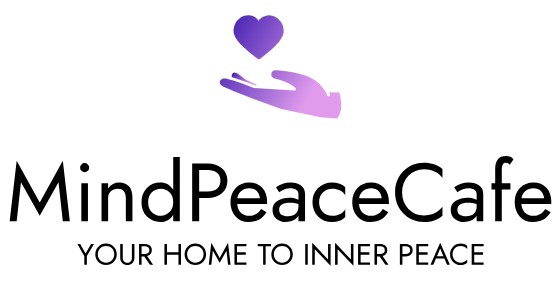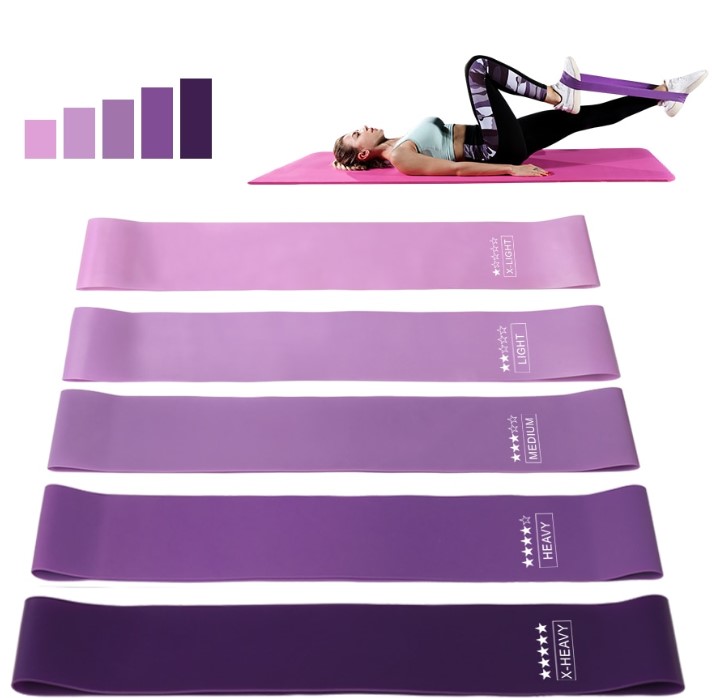Unlocking the Secrets of Inner Transformation with Headspace

Headspace, a popular meditation and mindfulness app, has become a powerful tool for spiritual growth and inner transformation. By harnessing the power of meditation, individuals can cultivate a deeper connection with their inner selves, leading to a more profound sense of inner peace and fulfillment. But what exactly is Headspace, and how can it support spiritual growth?
In this article, we’ll delve into the science behind Headspace, exploring the neuroscience behind meditation and its impact on mental wellness. We’ll also examine the role of mindfulness in spiritual growth and achieving a state of inner peace. Furthermore, we’ll gather expert insights on how to effectively utilize Headspace for spiritual growth and self-discovery, including setting intentions, incorporating mindful movement, and overcoming common obstacles.
Whether you’re a seasoned meditator or just starting out, this article will provide you with the knowledge and tools you need to unlock the full potential of Headspace and take your spiritual growth to the next level. By the end of this journey, you’ll be equipped with a deeper understanding of how to harness the power of meditation to cultivate a more profound sense of inner peace, self-awareness, and spiritual connection.
1. What is Headspace and How Does it Support Spiritual Growth?
Headspace is a meditation and mindfulness app that has revolutionized the way we approach mental wellness and spiritual growth. Founded by Andy Puddicombe, a former Buddhist monk, and Rich Pierson, a successful entrepreneur, Headspace has become a leading platform for cultivating mindfulness and inner peace. The app offers a wide range of guided meditation sessions, personalized meditation plans, and tracking features to help users stay on top of their meditation practice.
At its core, Headspace is designed to help users develop a deeper connection with their inner selves. By providing a structured and supportive environment, Headspace enables individuals to cultivate greater self-awareness, reduce stress and anxiety, and improve their overall mental well-being. The app’s meditation sessions are carefully crafted to help users develop a greater sense of compassion, empathy, and kindness towards themselves and others.
As users embark on their meditation journey with Headspace, they can expect to experience a range of benefits that support spiritual growth. These include increased feelings of calm and clarity, improved emotional regulation, and enhanced creativity and focus. By incorporating Headspace into their daily routine, individuals can expect to experience a profound shift in their mental and emotional state, leading to a more authentic, compassionate, and fulfilling life.
The Science Behind Headspace: How Meditation Affects the Brain
The science behind Headspace is rooted in the profound impact of meditation on the brain. Meditation has been shown to alter the structure and function of the brain, leading to improved mental wellness and a reduction in stress and anxiety. Studies have demonstrated that regular meditation practice can increase grey matter in areas of the brain associated with attention, emotion regulation, and memory. Additionally, meditation has been shown to reduce the size of the amygdala, the brain’s fear center, leading to a decrease in anxiety and fear responses.
Meditation has also been found to increase the production of neurotransmitters such as dopamine, serotonin, and endorphins, which are essential for mood regulation, motivation, and feelings of happiness. Furthermore, meditation has been shown to improve the communication between different regions of the brain, leading to enhanced cognitive function, creativity, and problem-solving ability. The neuroscientific benefits of meditation are undeniable, and Headspace’s guided meditation sessions are designed to harness these benefits, leading to improved mental wellness and a greater sense of inner peace.
By leveraging the science behind meditation, Headspace provides a powerful tool for transforming the brain and cultivating a more positive, resilient mindset. With regular practice, individuals can expect to experience a range of benefits, from reduced stress and anxiety to improved mood, focus, and overall well-being. By understanding the neuroscientific basis of meditation, individuals can feel empowered to take control of their mental health and well-being, and unlock the full potential of their minds.
Spiritual Growth Through Mindfulness: The Connection to Inner Peace
Mindfulness is a potent catalyst for spiritual growth, and a key component of the Headspace meditation practice. By cultivating mindfulness, individuals can develop a deeper understanding of themselves and the world around them, leading to a greater sense of inner peace and connection. Mindfulness is not just about being present in the moment, but also about embracing the present moment with openness, curiosity, and non-judgment. This allows individuals to let go of attachment to thoughts, emotions, and outcomes, and instead, connect with a deeper sense of purpose and meaning.
Through mindfulness, individuals can experience a profound shift in their perception of reality, leading to a greater sense of unity and interconnectedness with all things. This, in turn, can lead to a deeper sense of compassion, empathy, and kindness towards oneself and others. As individuals cultivate mindfulness, they may find that they are more able to approach life’s challenges with a sense of calm, clarity, and inner peace. They may also experience a greater sense of joy, contentment, and fulfillment, as they learn to appreciate the beauty and simplicity of the present moment.
The connection between mindfulness and inner peace is rooted in the ability to let go of the ego’s need for control and perfection. By embracing the present moment, individuals can release the burdens of the past and the anxiety of the future, and instead, find peace and contentment in the here and now. Through Headspace, individuals can access a range of guided meditation sessions and mindfulness exercises, designed to help them cultivate inner peace, compassion, and understanding. By incorporating mindfulness into their daily practice, individuals can experience a profound transformation in their lives, leading to a greater sense of purpose, meaning, and fulfillment.
2. Expert Insights: How to Use Headspace for Spiritual Growth and Inner Transformation

To unlock the full potential of Headspace for spiritual growth and inner transformation, it’s essential to understand how to effectively utilize the app’s features and tools. According to experts, setting clear intentions and goals for your meditation practice is key to achieving meaningful results. This involves identifying what you want to achieve through your meditation practice, whether it’s reduced stress, improved mood, or enhanced self-awareness. By setting intentions, individuals can focus their meditation practice and create a sense of direction and purpose.
Experts also recommend creating a personalized meditation practice that aligns with your individual needs and goals. This can involve experimenting with different meditation techniques, such as visualization, loving-kindness, or body scan meditation. Additionally, incorporating mindful movement and physical activity into your meditation practice can help to enhance the benefits of meditation and promote greater physical and mental well-being. By tailoring your meditation practice to your unique needs and preferences, individuals can create a more engaging and effective practice that supports their spiritual growth and inner transformation.
To take your meditation practice to the next level, experts recommend incorporating mindfulness into your daily routine. This can involve practicing mindfulness in daily activities, such as eating or walking, or using mindfulness to navigate challenging emotions and situations. By incorporating mindfulness into your daily life, individuals can create a greater sense of continuity and connection between their meditation practice and daily life, leading to deeper and more sustainable spiritual growth and inner transformation.
Setting Intentions: How to Create a Personalized Meditation Practice
Setting intentions is a powerful way to create a personalized meditation practice that aligns with your spiritual goals. By setting clear and specific intentions, you can focus your meditation practice and create a sense of direction and purpose. To set intentions, start by reflecting on what you want to achieve through your meditation practice. Do you want to reduce stress and anxiety, improve your mood, or enhance your self-awareness? Be specific and honest with yourself, and write down your intentions in a journal or on a sticky note.
Next, consider how you can tailor your meditation practice to support your intentions. For example, if you want to reduce stress and anxiety, you may want to focus on calming and relaxing meditation techniques, such as body scan meditation or loving-kindness meditation. If you want to improve your mood, you may want to incorporate more uplifting and energizing meditation techniques, such as visualization or movement meditation. By tailoring your meditation practice to your specific intentions, you can create a more effective and engaging practice that supports your spiritual growth.
Remember, setting intentions is not about achieving a specific outcome, but about creating a sense of direction and purpose for your meditation practice. By setting intentions, you can cultivate a greater sense of awareness, clarity, and focus, and create a more personalized and effective meditation practice that supports your spiritual goals. So take the time to reflect on your intentions, and create a meditation practice that is tailored to your unique needs and preferences.
Mindful Movement: How to Incorporate Physical Activity into Your Meditation Practice
Incorporating mindful movement into your meditation practice can be a game-changer for your spiritual growth. By combining physical activity with mindfulness, you can create a more holistic and engaging meditation practice that benefits both body and mind. Mindful movement can take many forms, such as yoga, tai chi, or walking, but the key is to approach physical activity with a mindful and intentional attitude. This means paying attention to your breath, your body, and your surroundings, and using physical activity as a way to cultivate greater awareness and connection.
The benefits of mindful movement are numerous. By incorporating physical activity into your meditation practice, you can increase your energy and vitality, improve your mood and overall well-being, and even enhance your focus and concentration. Mindful movement can also help to reduce stress and anxiety, and promote a greater sense of calm and relaxation. Additionally, mindful movement can help to create a greater sense of connection between your body and mind, promoting a more holistic and integrated approach to spiritual growth.
To get started with mindful movement, try incorporating simple physical activities into your meditation practice, such as stretching, walking, or yoga. Pay attention to your breath and your body, and focus on the sensations and sensations in your body. As you move, bring your attention to the present moment, and let go of any distractions or worries. With regular practice, you can cultivate a more mindful and intentional approach to physical activity, and experience the many benefits of mindful movement for yourself.
3. Overcoming Common Obstacles: Tips for Staying Consistent with Headspace
Staying consistent with your Headspace meditation practice can be a challenge, but with the right mindset and strategies, you can overcome common obstacles and make meditation a sustainable part of your daily routine. One of the biggest obstacles to consistent meditation practice is finding the time and motivation to meditate. To overcome this, try setting a specific meditation schedule and sticking to it, even if it’s just a few minutes a day. You can also try incorporating meditation into your daily routine, such as right after waking up or before bed.
Another common obstacle is dealing with distractions and mind-wandering during meditation. To overcome this, try using a guided meditation app like Headspace, which can help you stay focused and on track. You can also try using physical comfort items, such as a pillow or blanket, to help you relax and get comfortable during meditation. Additionally, try to cultivate a non-judgmental attitude towards your meditation practice, and remember that it’s okay if your mind wanders – simply acknowledge the thought and gently bring your attention back to your breath.
Remember, the key to overcoming common obstacles and staying consistent with your Headspace meditation practice is to be patient, kind, and compassionate with yourself. Don’t get discouraged if you miss a day or two, but instead focus on getting back on track and celebrating your small wins. With consistent practice and the right mindset, you can overcome any obstacle and make meditation a sustainable and transformative part of your life.
Creating a Meditation Habit: Strategies for Busy Lives
Creating a meditation habit can be a challenge, especially for those with busy lives. However, with the right strategies, you can incorporate meditation into your daily routine and make it a sustainable habit. The key is to start small and be consistent. Begin with just a few minutes of meditation a day, and gradually increase the duration as you become more comfortable with the practice. You can also try incorporating meditation into your daily routine, such as right after waking up or before bed.
Another strategy is to make meditation a priority by scheduling it into your daily planner or calendar. Treat meditation as a non-negotiable part of your daily routine, just like brushing your teeth or taking a shower. You can also try to find a quiet and peaceful spot in your home or office where you can meditate without distractions. Additionally, consider using a meditation app like Headspace, which can provide guided meditations and track your progress.
Remember, the goal is to make meditation a habit, not a chore. By starting small and being consistent, you can make meditation a sustainable part of your busy life. And don’t worry if you miss a day or two – simply get back on track and celebrate your small wins. With meditation, every moment counts, and even a few minutes a day can make a big difference in your overall well-being. So take the first step today, and discover the transformative power of meditation for yourself.
Dealing with Distractions: Tips for Minimizing Mind-Wandering During Meditation
One of the biggest challenges of meditation is dealing with distractions and minimizing mind-wandering. It’s natural for the mind to wander, but with practice and patience, you can learn to stay focused and present during your meditation practice. One of the most effective ways to minimize distractions is to create a conducive environment for meditation. This means finding a quiet and peaceful spot where you can meditate without interruptions or distractions. You can also try using a meditation cushion or chair to support your back and promote good posture.
Another strategy for minimizing mind-wandering is to use a guided meditation app like Headspace, which can provide gentle reminders and guidance to help you stay on track. You can also try using a mantra or a physical anchor, such as the breath, to help you stay focused and present. Additionally, try to cultivate a sense of curiosity and kindness towards your thoughts, rather than judgment or frustration. Remember, it’s okay if your mind wanders – simply acknowledge the thought and gently bring your attention back to your breath.
By minimizing distractions and staying focused, you can deepen your meditation practice and experience the many benefits of mindfulness, including reduced stress and anxiety, improved concentration, and increased self-awareness. With consistent practice and patience, you can learn to stay present and focused during your meditation practice, and experience the transformative power of mindfulness for yourself. Remember, the goal of meditation isn’t to achieve a specific state or stop your thoughts completely, but to cultivate awareness and acceptance of the present moment.
4. The Power of Community: How Headspace Can Connect You with Like-Minded Individuals
One of the most powerful aspects of Headspace is its ability to connect you with a community of like-minded individuals who share your goals and values. When you’re part of a community that supports and encourages you, you’re more likely to stay motivated and committed to your meditation practice. The Headspace community is a vibrant and supportive network of individuals who are on a similar journey of self-discovery and spiritual growth.
By connecting with others through Headspace, you can gain a deeper understanding of the meditation practice, learn from others’ experiences, and get inspired by their progress. You can also share your own experiences, ask questions, and get support from others who are facing similar challenges. This sense of community and connection can be a powerful catalyst for growth, helping you to stay accountable, motivated, and inspired to continue your meditation practice.
Moreover, the Headspace community is a safe and non-judgmental space where you can be yourself, without fear of criticism or rejection. You can connect with others who share your interests, goals, and values, and form meaningful relationships that can last a lifetime. By joining the Headspace community, you can tap into the collective energy and wisdom of thousands of like-minded individuals, and take your spiritual growth to the next level.
The Role of Community in Spiritual Growth: Why It Matters
Spiritual growth and personal development are often thought of as individual pursuits, but the truth is that community plays a vital role in supporting and accelerating our progress. When we’re surrounded by like-minded individuals who share our values and goals, we’re more likely to stay motivated, inspired, and accountable. A community provides a sense of belonging, validation, and support, which are essential for navigating the challenges and triumphs of our spiritual journey.
Furthermore, a community offers a wealth of knowledge, experience, and perspectives that can help us overcome obstacles and gain new insights. When we’re part of a community, we can learn from others, share our own experiences, and gain a deeper understanding of ourselves and the world around us. This collective wisdom and support can be a powerful catalyst for growth, helping us to overcome fears, build confidence, and develop a greater sense of purpose and direction.
In essence, community is a powerful accelerator of spiritual growth, providing a safe and supportive environment where we can explore, learn, and evolve. By connecting with others who share our values and goals, we can tap into a collective energy and wisdom that can transform our lives and help us realize our full potential. Whether it’s through online forums, in-person gatherings, or meditation groups, community is an essential component of any spiritual growth strategy.
Joining the Headspace Community: How to Connect with Others on a Similar Journey
Joining the Headspace community is a simple and intuitive process that can open up a world of connection, support, and inspiration. To get started, all you need to do is download the Headspace app and create an account. From there, you can explore the various features and communities within the platform, including meditation groups, discussion forums, and social sharing tools.
One of the most powerful ways to connect with others on the Headspace platform is through the ‘Buddy System’, which allows you to pair up with a meditation partner who shares your goals and interests. This can be a great way to stay motivated and accountable, as well as gain support and encouragement from someone who understands your journey. You can also join meditation groups and forums, where you can connect with others who are working towards similar goals and share your own experiences and insights.
By joining the Headspace community, you’ll gain access to a wealth of resources, support, and inspiration that can help you stay on track with your meditation practice and accelerate your spiritual growth. Whether you’re just starting out or are an experienced meditator, the Headspace community is a vibrant and supportive network of like-minded individuals who are committed to helping each other grow and thrive.
5. Taking Your Spiritual Growth to the Next Level: Advanced Techniques and Tips
Are you ready to take your spiritual growth to the next level? By incorporating advanced techniques and expert tips into your Headspace meditation practice, you can accelerate your progress and deepen your connection with your inner self. One powerful technique is visualization, which involves using your imagination to create a vivid mental image of your desired outcome. This can be a powerful way to manifest your goals and bring your vision into reality.
Another advanced technique is manifestation, which involves using meditation to focus your intention and energy on a specific outcome. By combining visualization and manifestation, you can create a powerful synergy that can help you achieve your goals and realize your dreams. Additionally, incorporating mindful movement into your meditation practice can help you cultivate a greater sense of body awareness and connection to your inner self.
To maximize your Headspace meditation practice, it’s also important to incorporate tips and strategies for sustaining progress and overcoming common obstacles. This can include setting clear goals and intentions, tracking your progress, and finding a meditation buddy or community for support. By incorporating these advanced techniques and tips into your meditation practice, you can take your spiritual growth to new heights and realize your full potential.
Advanced Meditation Techniques: Exploring Visualization and Manifestation
Advanced meditation techniques, such as visualization and manifestation, can be powerful tools for accelerating your spiritual growth and achieving your goals. Visualization involves using your imagination to create a vivid mental image of your desired outcome. This can be a powerful way to tap into your subconscious mind and bring your vision into reality. By vividly imagining yourself in a specific situation or achieving a particular goal, you can begin to reprogram your mind and align your energy with your desired outcome.
Manifestation takes visualization a step further by incorporating the power of intention and energy. This involves using meditation to focus your intention and energy on a specific outcome, and then allowing the universe to respond. By combining visualization and manifestation, you can create a powerful synergy that can help you achieve your goals and realize your dreams. Whether you’re looking to improve your relationships, enhance your career, or simply cultivate a greater sense of inner peace, these advanced meditation techniques can help you get there.
To incorporate visualization and manifestation into your meditation practice, start by setting a clear intention and focusing your attention on a specific outcome. Use all of your senses to bring the image to life, and then allow yourself to fully immerse in the feeling of already having achieved your goal. As you meditate, focus on the sensation of your intention and energy flowing out into the universe, and then allow yourself to let go and trust in the process. With consistent practice and patience, you can begin to see the powerful results of visualization and manifestation in your life.
Integrating Headspace into Your Daily Life: Tips for Sustaining Progress
Integrating Headspace into your daily life is a crucial step in sustaining progress on your spiritual journey. By making meditation a consistent part of your daily routine, you can cultivate a deeper sense of inner peace, clarity, and purpose. One of the most effective ways to do this is to create a meditation habit, where you commit to meditating at the same time every day. This could be first thing in the morning, right before bed, or during your lunch break – the key is to find a time that works for you and stick to it.
Another important tip is to make meditation a non-negotiable part of your daily routine. This means treating it with the same importance as brushing your teeth or taking a shower – it’s essential for your overall well-being. By prioritizing meditation, you can begin to see the benefits of reduced stress, improved focus, and increased self-awareness. Additionally, incorporating mindfulness into your daily activities, such as eating or walking, can help you stay present and focused throughout the day.
To take it to the next level, try incorporating reminders and accountability into your meditation practice. This could be setting a daily reminder on your phone, finding a meditation buddy, or tracking your progress on the Headspace app. By staying committed to your meditation practice, you can maintain momentum on your spiritual journey and continue to experience the profound benefits of meditation. With consistent practice and patience, you can unlock a deeper sense of inner peace, clarity, and purpose, and live a more fulfilling and meaningful life.
How do I know if Headspace is right for me?
Headspace is a great option for anyone looking to improve their mental wellness, reduce stress and anxiety, and increase their self-awareness. If you’re new to meditation, Headspace is a great place to start, as it offers a gentle and guided introduction to the practice. If you’re already familiar with meditation, Headspace can help you deepen your practice and explore new techniques and strategies.
Can I use Headspace if I have a busy schedule?
Absolutely! Headspace is designed to be flexible and adaptable to your busy schedule. You can meditate for just a few minutes a day, or take advantage of the app’s longer sessions. You can also use the app’s ‘Take10’ program, which provides a series of 10-minute meditation sessions that can be fit into even the busiest of schedules.
How do I stay motivated to meditate regularly?
Staying motivated to meditate regularly can be challenging, but there are a few strategies that can help. Try setting a specific goal for your meditation practice, such as meditating for a certain number of days in a row. You can also find a meditation buddy or join a meditation group to provide accountability and support. Finally, be sure to track your progress and celebrate your successes, no matter how small they may seem.
What if I get distracted during meditation?
It’s completely normal to get distracted during meditation, especially when you’re first starting out. The key is to gently bring your attention back to your breath or meditation object, without judgment or frustration. Remember, the goal of meditation isn’t to achieve a specific state or stop your thoughts completely, but rather to cultivate awareness and acceptance of the present moment.
Can I use Headspace in conjunction with other meditation apps or practices?
Yes, you can definitely use Headspace in conjunction with other meditation apps or practices. In fact, many people find that using a combination of different meditation tools and techniques helps to keep their practice fresh and engaging. Just be sure to listen to your body and adjust your practice as needed to avoid burnout or overload.




